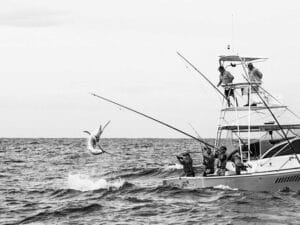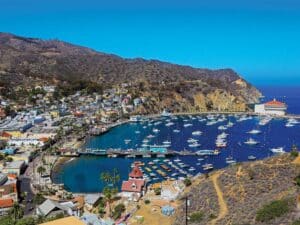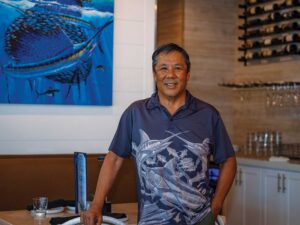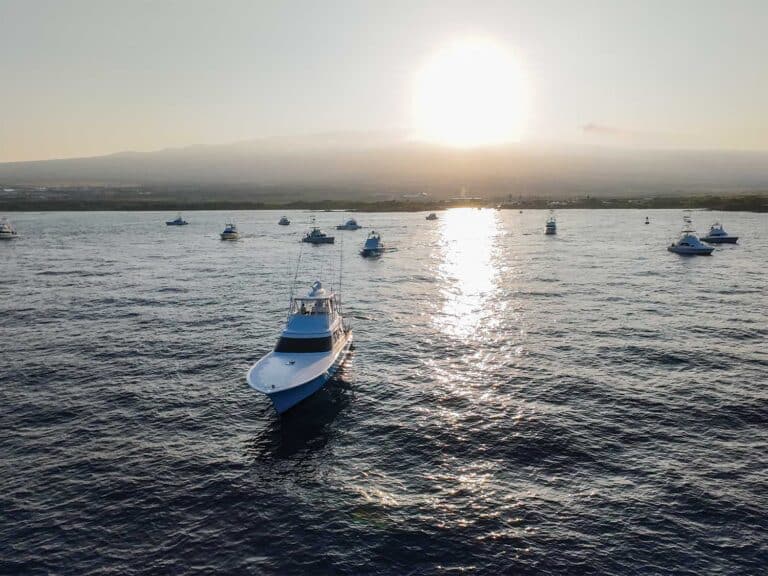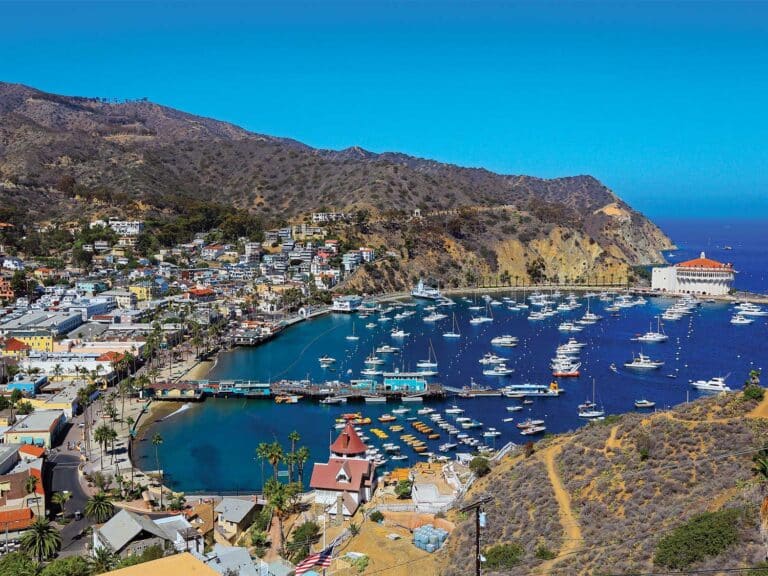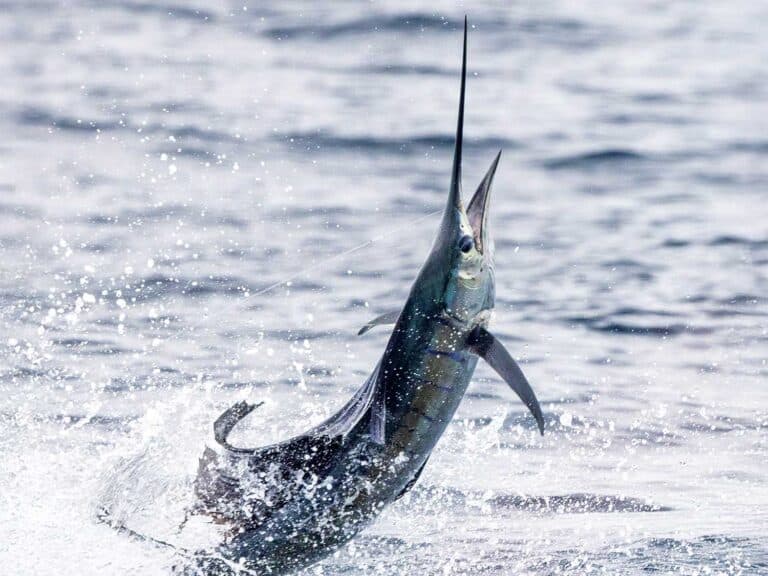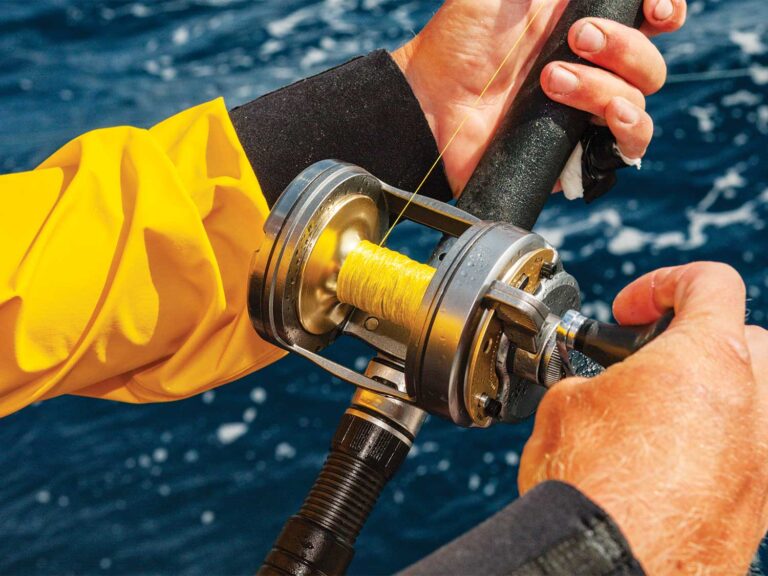
mp tb
My first trip to Quepos, Costa Rica, came from out of the blue. I was working for famed fly-fishing angler Harry Gray in Venezuela, and we had just finished up the 1990 fall season at La Guaira Bank. Our mission had been accomplished — we had just caught Gray his second pending world-record blue marlin on 12-pound tippet, and it was time to head home to the Florida Keys. Our bags were mostly packed when Gray suddenly decided he was going to embark on a two-week sailfish trip to Costa Rica.
We had just spent the last seven months on an intense blue-marlin campaign to break legendary angler Billy Pate’s records. In that time, we’d fought more than 50 marlin to boat only four fish — so I guess Gray wanted to blow off a little steam on the much-easier-to-catch sailfish. My contract ended that December, but Gray offered to pay my way. As much as I needed to get back home to the Keys to find my next job, I had never been to Costa Rica, and I decided to put the job hunt on hold. I’m glad I did.
By noon, we were in the air and heading to the little town of Quepos.
A Chance Encounter
Quepos is named after the indigenous Quepo Indians that lived there until the Spanish conquistadors displaced them. For centuries, Quepos barely existed until the United Fruit Company built a banana port, populating the area with workers from other parts of Central America. The town is situated at the mouth of a tropical inlet and bay that skirts a dusty six square blocks and is surrounded by rain forest.
Gray booked us at a hotel just outside of town next to the beautiful Manuel Antonio National Park. Once unpacked, we headed to the pier to get a fishing report and meet up with our crew — ironically the same crew that Pate was with when he caught one of his sailfish records here years earlier. We ran into Pate on the dock, and after a brief discussion, we found out that he’d raised 35 sails that day. I must confess, I didn’t know if he was joking. Thirty-five fish in a day was more than I had ever seen. The next day couldn’t come soon enough.
After a restless night, we headed to our boat the next morning, a 31 Bertram called Marlin Azul. Our crew was from Guanacaste to the north. Most of the boats at the time came down to Quepos from January through May to get away from the dreaded Papagayo winds that blew in from the north at that time of year.
Pate indicated that fishing started out slow, but before long, I heard some chatter coming from the bridge and the Spanish word for “sail.” I saw a very large fish coming behind one of the teasers and decided to grab the rod, telling Gray that this was no sailfish. It had to have been a marlin — after all, I’d just spent seven months pursuing them, so I knew what they looked like. Or did I?
We fought the fish for about 15 minutes before billing it and snapping a few photos. I’d heard about the size of Pacific sailfish, but experiencing it firsthand was amazing. It was definitely a Jurassic Park moment for me, complete with mountainous jungle in the background. The crew told us that the fish weighed between 125 and 150 pounds, and we went on to catch 11 more of the same size that day. We’d shattered the country record of three fish in a day on fly, the crew told us, so we were quite happy.
Gray had been to Costa Rica before, but the last seven months fishing marlin in rough Atlantic waters gave him a real advantage with the flat-water sails of Quepos, so I thumbed through the International Game Fish Association record book to discover that there were a few records to be had. We went on to set both the 8- and 4-pound Pacific sail records. With two new pending records under his belt, Gray decided to put me back on the payroll and extend the trip. The goal this time was to head north to catch the first Pacific blue marlin on fly, which we did with the help of
Capt. Bubba Carter.
We traveled up and down the Pacific coast the next few months, but all the while, Gray told me that he liked Quepos the best and that he was going back there to live. He said he would build a house and bring a boat from Florida to start a charter business. I knew this man well enough to know he was serious, and he offered me the job, but I had to turn him down at the time. Sure enough, Gray went back to Quepos and made it his home.
A New Marina Is Born
Several years later while fishing the sport-fisher Stalker with boat owners Gary Mabry and Charles Nail in Venezuela, we met up with fly-angler Enrico Capozzi. Capozzi was record fishing at the time but having trouble finding the right boats to charter with fly-fishing experience. He was hoping to come back to try for a record blue marlin in the spring, and I was itching to get back to Quepos. So we cut a deal — we would fish him on Stalker, and his crew would fish us in the Gray International Fly Tournament out of Quepos, which is named in memory of Harry Gray.
It worked out well. We won first place in the GIFT, and we caught Capozzi a 12-pound-tippet record blue that spring in Venezuela. With the tournament bug deeply planted, we put Quepos on the 2010 schedule. I’d heard that ground had been broken on the new Marina Pez Vela but figured it would be years before we could get a slip. Harold Lovelady and Capt. Glen Mumford started the project in 2001, and while things don’t always move fast in Costa Rica, to my surprise there was already a full break wall and floating docks in place as we pulled into the harbor in 2010.
Just three years later, in April 2013, that little marina was now big enough to host the Olympics of sport fishing, the 2013 Offshore World Championship. In its very first year in Costa Rica, the Offshore World Championship hosted a record 67 teams from 31 different countries. Each team had earned an invitation to the event by winning one of the 120 qualifying offshore tournaments held around the world. The 324 anglers experienced a record-setting bite for the tournament, recording 821 billfish releases, including 811 sailfish, nine blue marlin and one striped marlin.
Once a sleepy fishing village, Quepos is now a player on the international sport-fishing stage.

